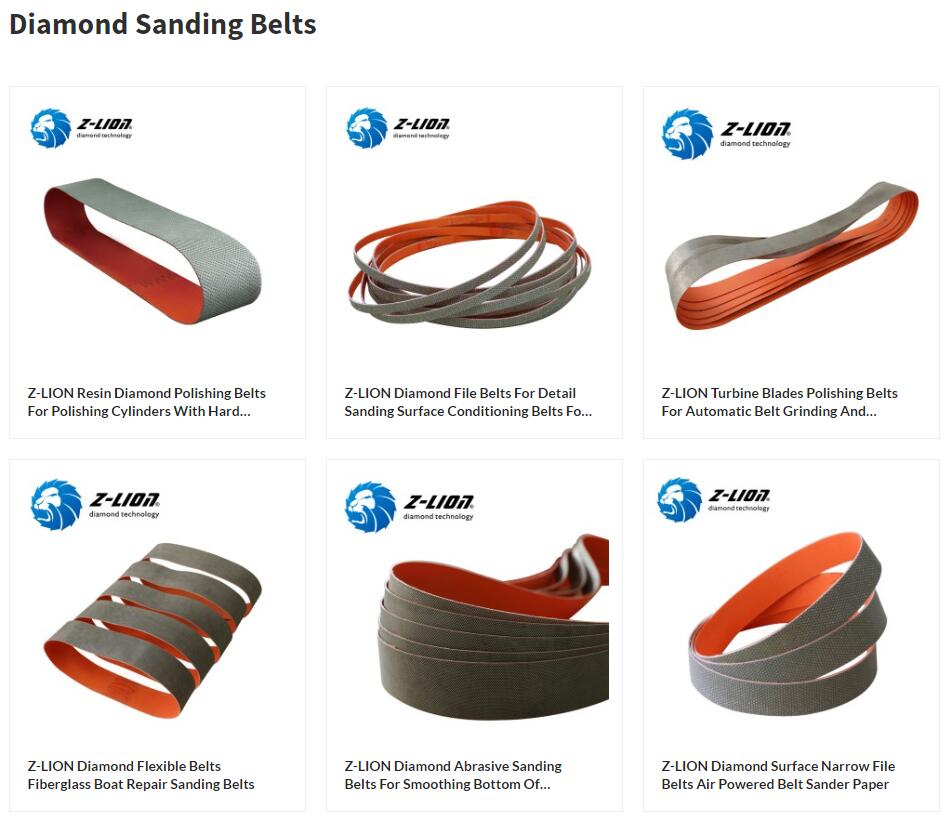Abrasive belt grinding has the characteristics of high efficiency, high economy and wide application range, and is increasingly valued by all walks of life. In order to make better use of the advantages of abrasive belt grinding and keep the abrasive belt in good condition during use, Z-LION has sorted out some knowledge about the storage and use of abrasive belts to share with you.
The following are the main points of abrasive belt storage:
Temperature and Humidity Requirements:
Ideal temperature: 18°C to 22°C
Ideal Humidity: 40% to 65%
Avoid storing the abrasive belt in a place where the temperature and humidity change greatly. High temperatures will age the adhesive and shorten the life of the belt. Abrasive belts based on synthetic fibers (such as polyester cloth) are sensitive to cold and should not be stored in cold storage. Excessive humidity will cause deformation of the abrasive belt and reduce the bonding strength of the abrasive belt. Wet abrasive belts can cause buckling, wrinkling, shortened life, and sticking of abrasive particles while grinding. High temperatures and low humidity can make paper-based abrasive belts brittle and prone to breaking.
Storage: Abrasive belts should be stored in a cool, dry, and ventilated warehouse. Put the sanding belt on a stand, not on the floor. The distance between the shelf and the ground and the wall is about 200-500 mm. Avoid placing shelves near heat sinks and drains. Try not to open unused cassettes to avoid potential damage. Do not pile heavy objects on the abrasive belt packaging box to avoid creases and cracks on the abrasive belt.
Before using an abrasive belt, it is important to treat it properly for optimum performance. Here are the steps to pre-treat your abrasive belts:
Belt suspension: Hang the belt for at least 2 to 5 days before use. This allows the belt to adapt to the environmental conditions at the point of use and helps eliminate packaging-induced curling. The suspended abrasive belt adopts a pipe with a diameter of 100-200mm. The length of the tube should be greater than the width of the belt to prevent the belt from falling off or creating a flared shape. Make sure the pipe is level to avoid damaging the edge of the belt. The temperature and humidity of the abrasive belt hanging environment should meet the storage conditions stipulated by the abrasive belt. An easy way to maintain proper conditions is to keep the hanging area dry with 40 or 60-watt light bulbs in a sealed room.
Visual inspection: Before using a hanging abrasive belt, perform a thorough visual inspection. Check that the belt joints are flat and secure to ensure a proper bond. Inspect the belt surface for any cosmetic defects such as holes, clusters of abrasive particles, missing abrasive particles, glue spots, or wrinkles. Check the edges of the belt to make sure they are neat without any gaps. If the gap is small, it can be cut with a circular arc without affecting the performance of the belt.
The principle of use of the abrasive belt can greatly affect the quality and efficiency of the grinding process. Here are the points mentioned:
Choose the right type of abrasive belt: The selection of the abrasive belt should consider the workpiece material, shape, grinding method, and other factors. When choosing a suitable model, factors such as the base material, abrasive material, type of bonding agent, and joint method of the abrasive belt should be considered.
Choose the right particle size: Choosing the correct grit size will ensure a good surface quality of the workpiece and increase the service life of the abrasive belt. If the grain size is too small, it may affect the surface quality of the workpiece. If the grit size is too large, it will reduce the efficiency of the belt and cause premature wear.
Grain size selection during multi-pass abrasive belt grinding: If more than one belt grinding process is used for a workpiece, the grit size of subsequent belts can only skip a maximum of two grit numbers compared to the previous one. This enables efficient grinding and ensures that the shape, size, and surface quality of the workpiece are maintained.
Wear distribution during multi-pass abrasive belt grinding: The allocation ratio of the preceding and following processes varies according to the number of grinding processes used. For two processes, the split is 85/15. For the three processes, the split ratio is 65/25/10. For four processes, the distribution ratio is 50/30/12/8. This distribution helps to achieve the desired grinding results and maintain workpiece quality.
Belt running direction: When using overlapping belts, make sure the running direction matches the direction marked on the back of the belt. Incorrect running direction can lead to premature breakage of the belt and affect the surface quality of the workpiece. Running direction is not an issue when using butt-butted belts.
Post time: Aug-11-2023

